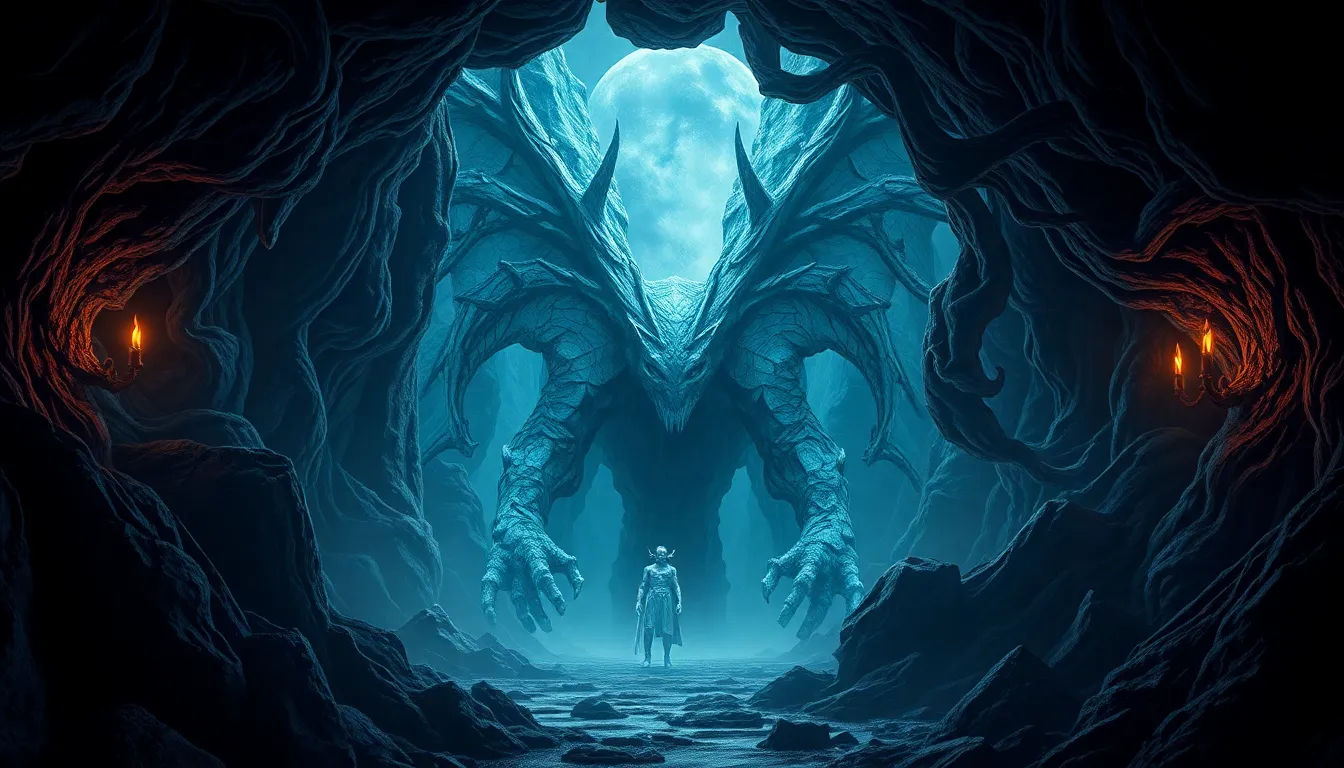The Underworld: A Mythical Exploration of Fear and Courage
I. Introduction
The concept of the Underworld has fascinated humans throughout history, manifesting in various forms across different mythologies. Generally defined as a realm where the souls of the deceased reside, the Underworld often embodies both fear and courage. This duality is crucial in understanding human emotion, as it reflects our deepest anxieties and our capacity for bravery in the face of those fears.
This article aims to explore the rich tapestry of the Underworld in mythology, examining how it represents themes of fear and courage across different cultures and epochs.
II. Historical Context of the Underworld
Ancient civilizations had diverse beliefs about the Underworld, each offering unique perspectives on death and the afterlife.
- Mesopotamian Beliefs: The Underworld, known as Kur, was seen as a dark and dreary place where all souls, regardless of their deeds in life, ended up.
- Egyptian Afterlife: The Egyptians believed in a judgment process where the heart of the deceased was weighed against the feather of Ma’at, determining their fate in the afterlife.
- Greek Mythology: In Greek myths, the Underworld, ruled by Hades, consisted of various regions like Elysium for the virtuous and Tartarus for the wicked.
Over the centuries, Underworld myths evolved, reflecting changes in societal values and beliefs about death. Comparative analyses reveal both similarities and differences in how cultures perceive the afterlife, with many emphasizing moral retribution and the importance of living a virtuous life.
III. The Symbolism of the Underworld
The Underworld serves as a powerful symbol of fear and courage, encapsulating humanity’s relationship with mortality.
A. The Underworld as a Representation of Fear
- Fear of Death and the Unknown: The Underworld often embodies humanity’s greatest fear—what lies beyond death. This fear manifests in various myths that highlight the uncertainty surrounding the afterlife.
- Consequences of Moral Choices: Many myths illustrate that the Underworld is a place of judgment, where one’s moral choices in life directly affect their fate after death.
B. The Underworld as a Space for Courage
- Journeys of Heroes: Many mythological heroes, such as Orpheus and Odysseus, undertake perilous journeys into the Underworld, showcasing their bravery as they confront fears and uncertainties.
- Personal Transformation and Growth: These journeys often lead to profound personal insights and transformations, emphasizing the importance of courage in overcoming life’s challenges.
IV. The Underworld in Literature and Art
The Underworld has been a significant theme in classical literature and art, influencing countless works throughout history.
- Classical Literature: In Homer’s “The Odyssey,” the protagonist’s descent into the Underworld reveals insights about life, death, and the human condition.
- Artistic Representations: Dante’s “Inferno” vividly depicts the various circles of Hell, exploring themes of sin, redemption, and moral consequence.
- Modern Interpretations: Contemporary literature and film often revisit the theme of the Underworld, reinterpreting it to reflect modern fears and societal issues.
V. Archetypes of Fear and Courage
Mythological narratives about the Underworld often feature recurring archetypes that embody fear and courage.
- The Hero: Central figures who embark on journeys into the Underworld, facing their fears and emerging transformed.
- The Guide: Characters such as Charon and Virgil serve as guides, helping souls navigate the complexities of the Underworld.
- The Villain: Figures like Hades and Cerberus represent obstacles and challenges that must be confronted.
These archetypes carry psychological implications, reflecting our inner struggles with fear, morality, and the pursuit of courage.
VI. The Role of Rituals and Myths
Rituals surrounding death and the afterlife reveal much about societal values regarding fear and courage.
- Rituals Associated with Death: Many cultures have developed rituals to honor the deceased, reflecting their beliefs about the Underworld and the afterlife.
- Myths Illustrating the Journey: Myths often depict the journey through the Underworld as a metaphor for life’s challenges and the quest for understanding.
- Reflection of Societal Values: Rituals and myths highlight the collective fears and sources of courage within a culture, shaping their perspectives on mortality.
VII. The Underworld and Personal Growth
Mythological journeys through the Underworld offer vital lessons about personal growth and transformation.
- Lessons Learned: Heroes often return from the Underworld with newfound wisdom, emphasizing the importance of facing one’s fears.
- Confronting Fears: The act of descending into the Underworld represents a confrontation with personal demons, a necessary step for growth.
- Courage as a Pathway: Embracing courage leads to understanding and acceptance of life’s uncertainties and challenges.
VIII. Contemporary Perspectives on the Underworld
Modern society continues to interpret the Underworld in various ways, reflecting current cultural anxieties and values.
- Modern Interpretations: The Underworld is often portrayed in popular culture, from video games to movies, serving as a backdrop for exploring themes of fear and courage.
- Relevance in Today’s World: The themes of the Underworld resonate with contemporary issues, such as mental health, existential crises, and the quest for meaning in a chaotic world.
IX. The Intersection
In conclusion, the Underworld serves as a profound metaphor for the human experience, encapsulating the complexities of fear and courage. By exploring its historical context, symbolism, and representations in literature and art, we gain valuable insights into our own struggles with mortality and the transformative power of confronting our fears. The Underworld, in all its forms, invites us to embark on our journeys of courage, understanding, and ultimately, acceptance.



